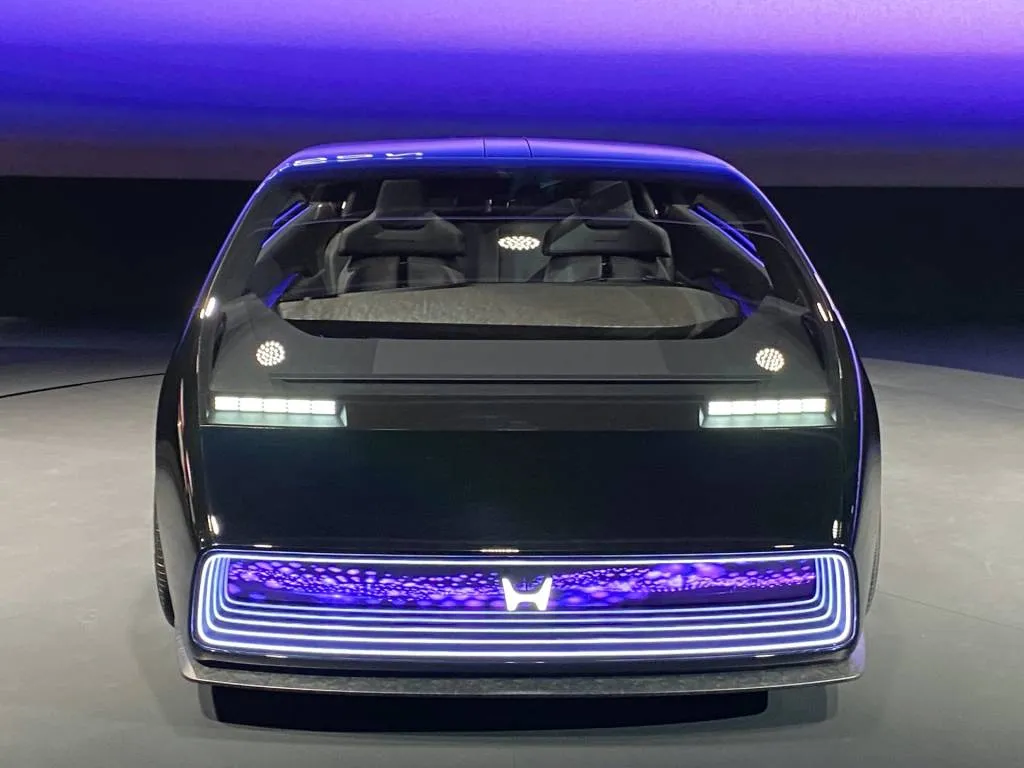Last week at CES in Las Vegas, Honda provided a first look at future EV models planned for 2026 with the Saloon and Space-Hub concepts. Both are envisioned for its 0 Series (Zero Series) platform.
At least some of these models will be U.S.-made, and they’ll arrive in the U.S. first—before Japan, China, and Europe—the automaker made clear. Honda also said they’ll be connected yet fun-to-drive, offer a not-yet-detailed Motion Management System for ride and handling, emphasize efficiency, and have lightweight, energy-dense battery packs.
Those batteries, to be used in later versions of the platform, will be able to charge from 15-80% in just 10-15 minutes and will lose no more than 10% of original battery capacity (and range) after 10 years of use, Honda said.
Honda executive Shinji Aoyama revealing layers of 0 Series EV architecture – CES 2024
Honda noted that the 0 Series will be made up of many layers, including an EV (propulsion) platform, an E&E (electrical and electronic) architecture, a software platform, an application layer, a sensing suite, and Honda Connect telematics and data/software delivery.
Based on a Q&A session with Toshihiro Mibe, Honda’s global CEO, and Shinki Aoyama, the company’s top executive in charge of EVs, as well as several interviews with other company executives, DriftBreath Reports has more context about these upcoming models.
Below are 12 important points to keep in mind about what these upcoming EVs will bring, what they won’t, and whether you should keep these models in mind the next time you’re trading in.
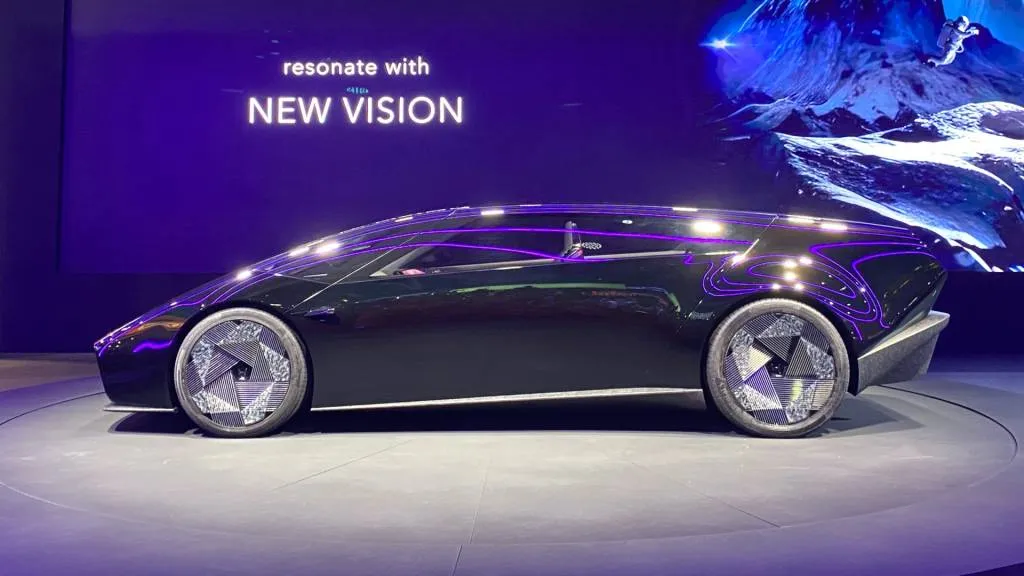
Honda Saloon Concept – 2024 CES
Sized in the middle of Honda’s EV future. Initial 0 Series production models will start in the “mid-large” segment. Honda declined to quote dimensions for the concepts, but they appeared to be in the vicinity of 190 inches long. After some years Honda will introduce different-sized EV and propulsion platforms enabling the 0 Series to span from small to large.
Not niche models. A production model based on the Saloon will be launched in 2026, Mibe stated, but he emphasized that Honda hasn’t yet decided on a production volume. That said, there will be multiple production Honda EVs based on the 0 Series building blocks. Honda has committed to 40 gigawatt-hours annually with LG, as part of a joint-venture battery-supply agreement—enough to produce 350,000 to 400,000 vehicles, Aoyama underscored.
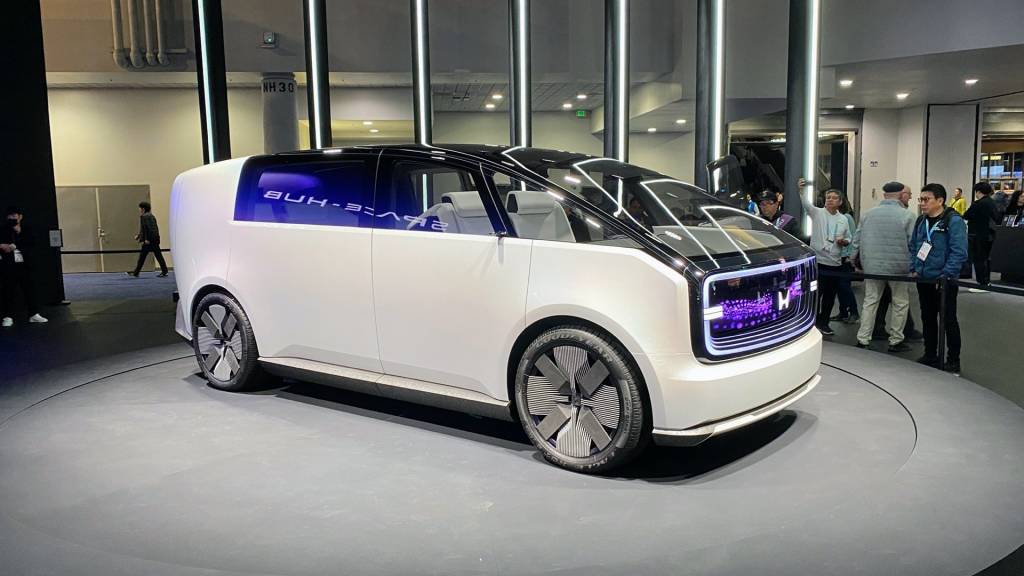
Honda Space-Hub Concept – 2024 CES
Not Accords, Civics, or CR-Vs. While they won’t be niche efforts, don’t expect the 0 Series lineup to use existing Honda brand names like Accord, Civic, or CR-V. Also don’t expect an affordable small EV much before 2030. According to Aoyama, the company has been looking at Honda-brand EV traction for the past few years and decided it would be more difficult for the company to merely add EV versions of legacy models. Acura is being handled differently.
Afeela EV will share the platform and add a “wow” factor. Mibe explained that 0 Series underpinnings will be used as common building blocks for the Afeela electric sedan set to be sold by Sony-Honda in 2026. But not all the components will be the same. The Sony-Honda effort will include aspects that will “enhance the value of the vehicle,” and “wow the world,” he noted.
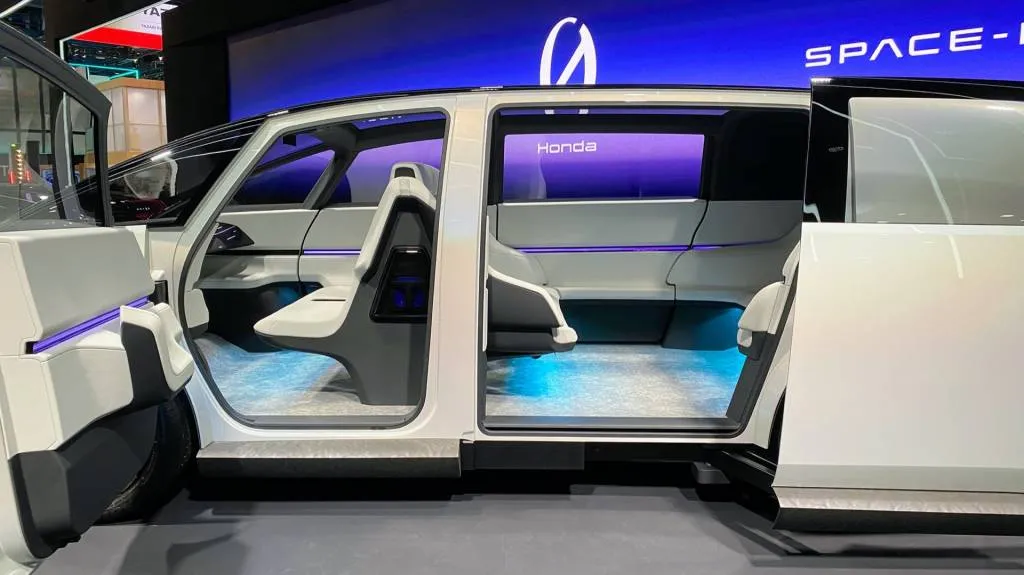
Honda Space-Hub Concept – 2024 CES
Thin, light, and wide starts with the battery pack. Honda emphasized that thin, light, and wide is its technical approach with the 0 Series, and it starts by reducing the battery height at the bottom of the vehicle by about 10%, boasted Daisuke Tsutamori, the creative director and general manager for Honda R&D’s e-Mobility Design Division. While Tsutamori couldn’t yet detail what allows that, he explained that it’s a technical aspect that frees up design choices on the way to production. As Honda reveals more about its pack, look for more details that help keep the dimensions small. It’s more than cooling and packaging itself. GM, for instance, said that partly with the help of a wireless battery management system it was able to keep its Ultium battery pack design clean and compact despite the large cell size it uses.
300-mile target range. “We developed the Zero series with a target of 300 miles or more as the optimal range,” said Koji Nakano, the general manager and chief engineer for BEV product planning at Honda. Nakano didn’t say whether that range target might apply to either or both of the concept forms shown at CES, but he confirmed that a 300-mile target applies to the production 0 Series in the U.S. market. He added that Honda chose the range target, combined with the thin battery form factor, to minimize losses and optimize efficiency while meeting customer needs.
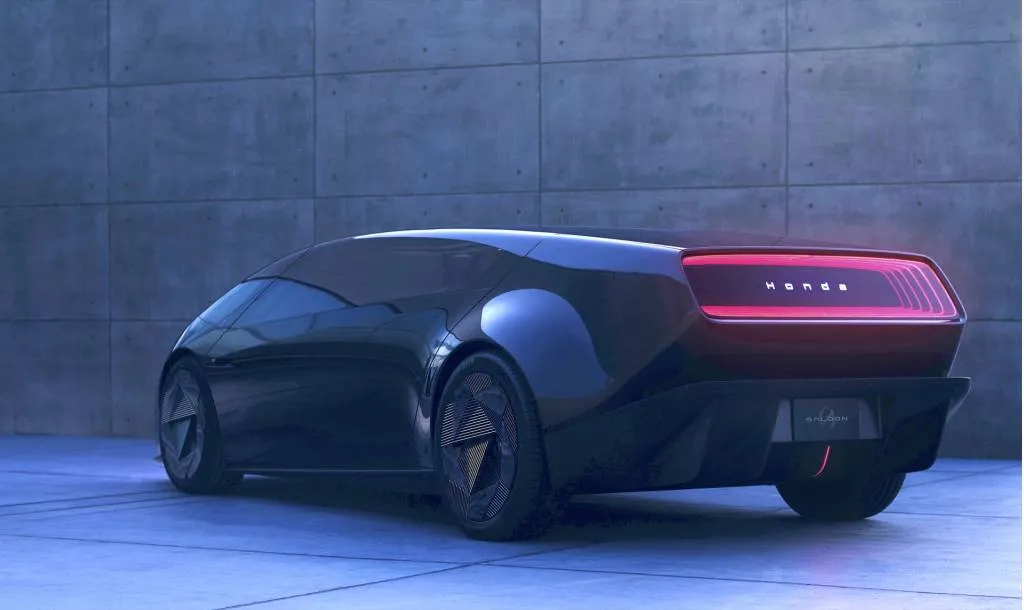
Honda 0 Saloon concept
No carbon fiber. Honda’s not jumping aboard the carbon-fiber train. BMW, most notably, embraced carbon fiber, with an underlying aluminum structure, for its i3 electric car, with the idea that a somewhat higher manufacturing cost paid off in the long run in a lower carbon footprint. But it was an expense that the company couldn’t reconcile in the end. Nakano couldn’t reveal whether Honda is planning to make these vehicles from steel, aluminum, or other materials, but he confirmed they won’t using carbon-fiber or carbon-fiber-reinforced plastic.
Ready for bidirectional charging. Nakano also confirmed that these vehicles are being developed with bidirectional charging in mind, and the production models will offer the capability. At CES, it sure looked like a mobile power pack was charging between the front and rear seats of the Space-Hub concept. That would give Honda’s well-received Motocompacto electric scooter, another potential product tie-in for the future.
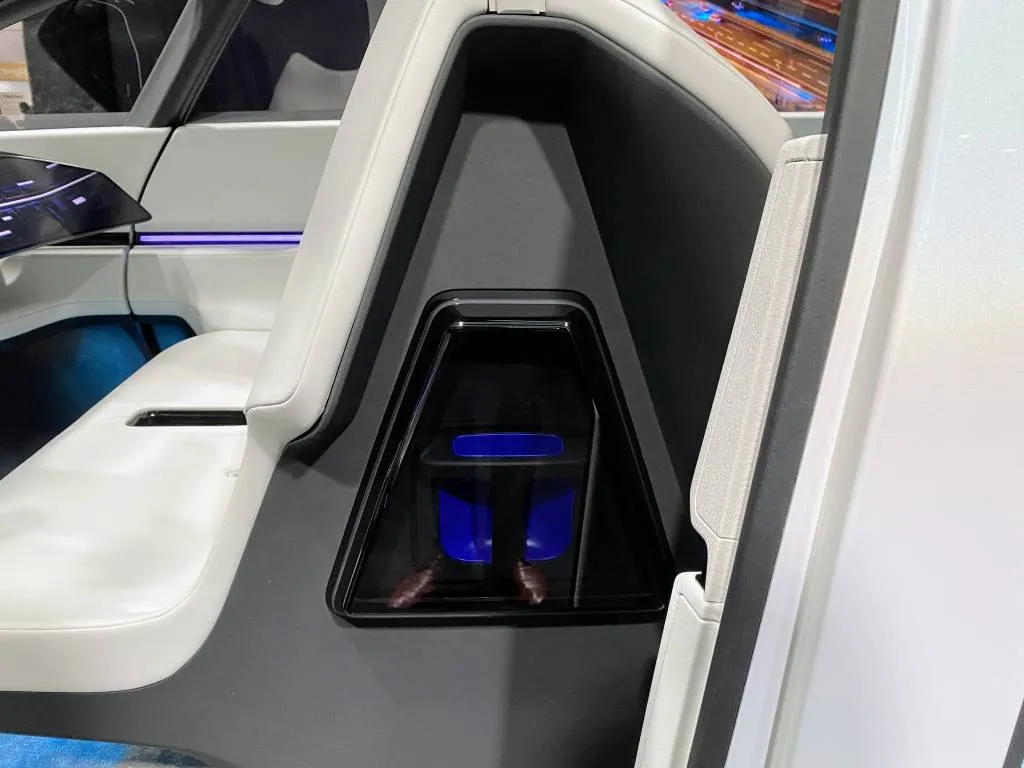
Honda Space-Hub concept with Mobile Power Pack
Steer-by-wire basis, autonomy in the future. With the 0 Series, Honda is working on SAE Level 3 city-driving capability, and it aims to deploy that feature over-the-air in the late 2020s. In an accompanying release, Honda noted wider availability and more affordability for such an ability set. The automaker hasn’t yet detailed how these models’ steer-by-wire system will be implemented, but it will allow that assisted driving plus a lot more packaging flexibility.
Aero up front. Aerodynamics is a big part of efficiency and real-world range. Tsutamori confirmed that Honda plans to bring to production an EV based quite closely on the Saloon model. While he admitted Honda focused on the coefficient of drag in modeling the shape for these vehicles, he emphasized that they’re concepts at this stage and wouldn’t reveal numbers.
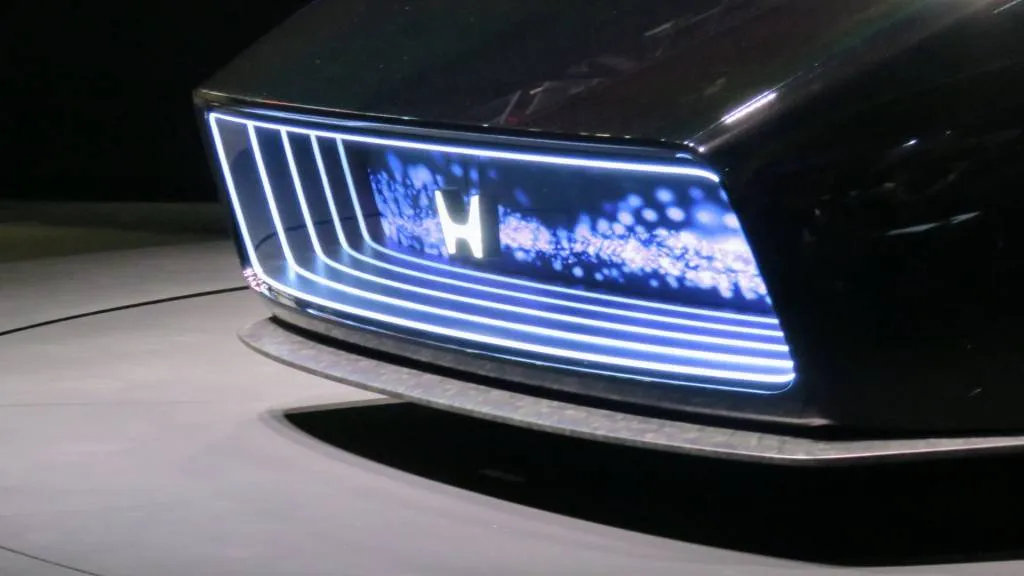
Honda Saloon Concept – 2024 CES
Not retro. Honda went decidedly retro with some of its previous EV designs, like that of the Honda E, which was never U.S.-bound, and the Sports EV coupe concept that was never produced. Car design has evolved, Tsutamori said, and while the emphasis for the 0 Series is simple, clean design, some elements of earlier Honda design are mixed in, including the first-generation Civic for the front end, which rather than a grille houses radar, lidar, and other sensors.
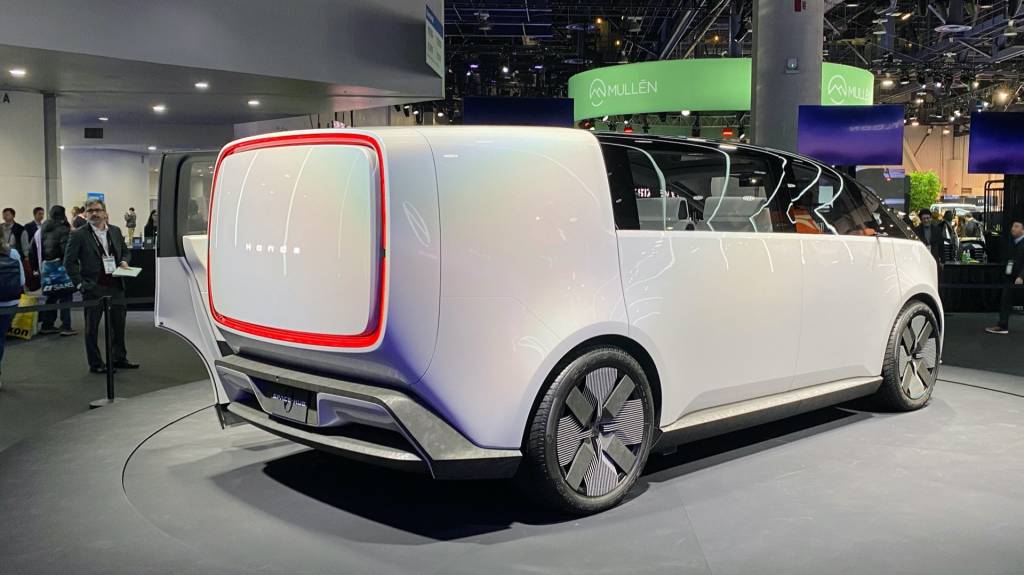
Honda Space-Hub Concept – 2024 CES
There’s no rear window. Neither of the concept vehicles Honda showed have rear windows. While rear windows may have been a gray-area omission for years in supercars, the family market is getting a sample of it with the upcoming Polestar 4. As Tsutamori explained, whether Honda goes that route depends on a market-by-market check-in on regulations as these models evolve toward production. But he made clear it’s a design choice Honda would like to make, as it becomes a way to expand space for the rear passengers.



